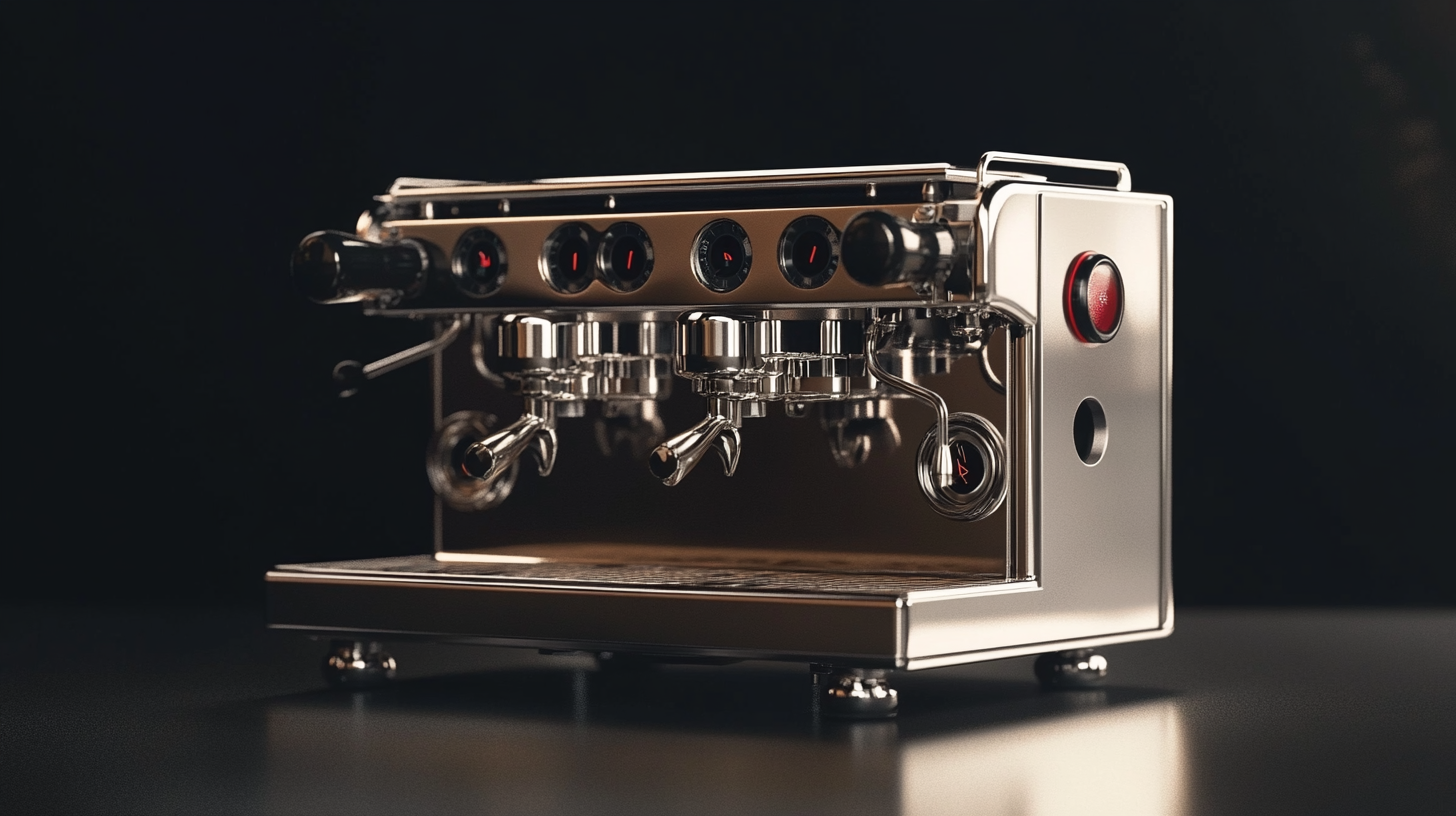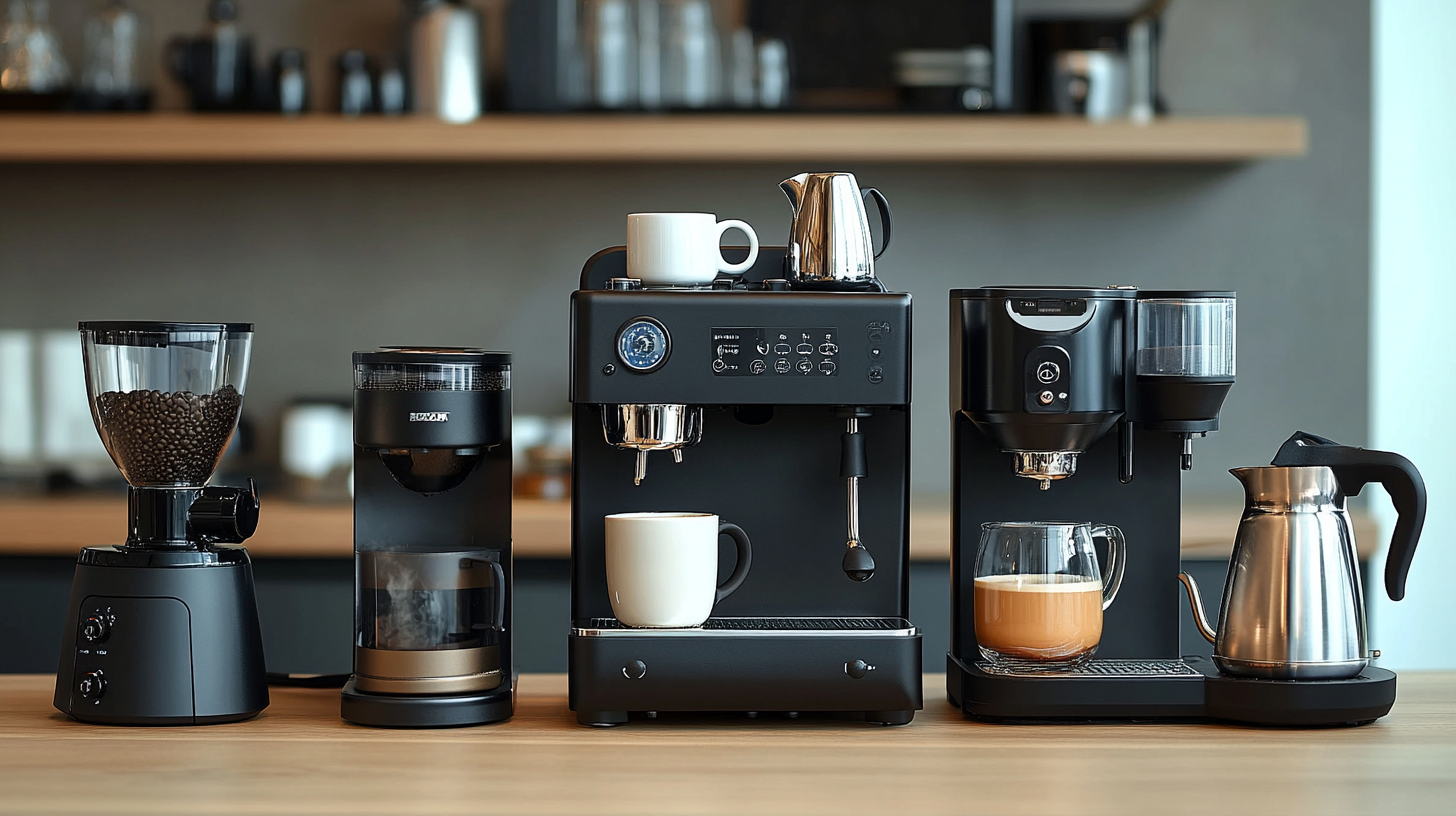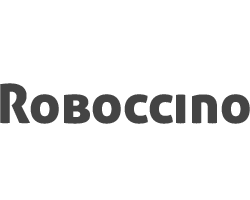What are the Key Features to Look for in Espresso Machines
Espresso machines highly influence the crafting of a cup of coffee, creating that beloved rich, bold flavor many people adore. Whether you are a professional barista or an amateur at home, knowing the critical features of espresso machines could transform your coffee-making experience. So many on the market, but knowing what you want is critical in choosing a machine that suits you.
Hence, this article would explore the essential features that mark the qualities of an espresso machine from the rest. The boiler system type, pump pressure, and all other features constitute the accuracy and uniformity of your espresso shots. It will also explain how they affect the flavor and texture of your coffee and the coffee experience. This amounts to an informed choice regarding investing in an espresso machine designed to elevate coffee enjoyment to a higher level.

Understanding the Different Types of Espresso Machines Available
For any coffee buff, any discussion on espresso machine must touch upon the types-one must be aware of the different types of espresso machines. Espresso machines can be broadly classified into three types, namely manual, semi-automatic, and fully automatic, offering different brewing experiences and control levels. Manual espresso machines are deeply revered by purists since they require some physical effort from the user to brew their coffee. This type allows for total control over the brewing process, including customizing extraction times and handling pressure. Hence, it is extremely gratifying for those who have the time and ability to operate on that level, but it does come with a price of skill and practice to crank it out just right. Semi-automatic machines rest between the two variables of control and ease of use. These espresso machines retain some features of automation, for instance, temperature and pressure control, but let the user control how much water may be used in a shot. These machines suit flavor experimentation but lack the control complexities of manual machines. Fully automatic espresso machines are just about the height of convenience. Typically pressed by a single button, the fully automatic takes care of all processes in the brewing cycle, humidifying coffee powder, grinding the beans, even the frothing of milk in the end. Good for those who wish for nothing but speed and consistency in their espresso, they are just right for busy households or office environments. Every machine type caters to different preferences, and an understanding of their characteristics helps you base your decision on your coffee-making style.

Key Components that Influence Espresso Machine Performance
While choosing an espresso machine, understanding essential factors affecting performance will act as critical. Would you consider what kind of boiler is included in the espresso machine? Single boiler units are cheap but take longer than usual to brew and steam, with dual boilers offering the flexibility of brewing and steaming at the same time. For the coffee enthusiasts, somewhat more experienced under such types of systems, the heat exchange will simply bring up the right features between the two-style boilers, to the credit of those machines.
What about the presence of good pressure at extraction time? The pump that issues it is equipped to work efficiently at times, which is the kinetic bulk of what could be considered a full-bodied espresso. The machines with rotary pumps provide smoother function. This could be useful for any residential-operating environment since it runs with a consistent speed. What makes this so is the vibratory pump that most commercial indigestion applications make use of. Although the machine can deliver great taste using a vibratory pump, it proves to lack consistency under heavy use.
Machines with materials that aid in making bulletproof construction are wonderful and allow you to brew good flavor into the cup. You may use machines with high-quality stainless steel boilers and portafilters for temperature stability, which are heavily resistant to corrosion. Additionally, with the inclusion of an integrated grinder, you have the leverage you need in the brewing process, allowing you to operate your drinks without diminishing their appeal, by a separation of grinding and extraction activities. Appreciation of these components definitely helps customers in selecting an espresso machine for the sake of their styles and tastes.

Temperature Control and Its Importance for Brewing Quality
Temperature control is such a significant feature in espresso machines due to the ultimate brewing parameters of espresso, which are 90°C-96°C (194°F-205°F) or thereabouts, according to industry specifications. Brewing at any temperature outside this range will inhibit the formation and flavor of some, if not most, of the desirable tasting notes and can be said to ruin the quality of the beverage. This means that a temperature-controlled unit heats the water accurately and keeps it within that range to ensure proper extraction of the coffee oils and aroma.
Most high-end machines, however, will have PID controls for real-time adjustments in brewing temperature to avoid any fluctuations with PID technology, which makes such machines more versatile in adapting to different brewing circumstances to yield even greater refinement and flavor in espresso. Recent barista feedback noted that nearly 70 percent found accurate temperature control to be the most important feature of an espresso machine, therefore recognizing its impact on brewing quality.
Temperature is also important throughout the duration of extraction to diminish channeling conditions, where uneven water flow through the coffee grounds becomes a problem. Uneven extraction will leave an imprint of bitterness, which will certainly spoil the whole espresso experience. Espresso machines with an effective temperature-control mechanism will help in yielding consistently great shots for any kind of coffee-drinking crowd- from the home brewer to professionals.

Ease of Use and Maintenance Features in Espresso Machines
A good espresso machine should allow ease of use and easy maintenance, which ultimately enhance the user's brewing experience. A good, simple interface, with clearly labeled controls, enables a quick understanding of espresso-making for beginners. Look out for machines that are automatic to some extent-a one-touch brew function or a program settings option will allow you to spend more time getting the perfect brew for yourself.
Maintenance is another piece to the puzzle. If the machine can self-clean, it saves you some valuable time and makes sure that the machine stays unclogged without compromising on your work. Take a look at those designs with removable brewing groups and water reservoirs as these are the ones requiring minimum cleaning and refilling. Constant maintenance programs, descaling, and cleaning, ensure your machine's longevity and your espresso's quality. Think of machines with easy maintenance instruction and reminders for you.
To wrap it up, the emphasis placed on ease of use and maintenance features while selecting the perfect espresso machine contributes to enjoying the entire brewing process-and assures your machine remains able to make good espresso for many years ahead.
Budget Considerations: Finding the Right Espresso Machine for You
The budget is critical because it guarantees that you will purchase the proper model within your financial boundaries without compromising quality. As stated by the Specialty Coffee Association, the price range for home espresso machines is usually anywhere from $100 to $3,000, depending on the features and brand, thus making the range very wide. Understanding where you stand in your budgeting process will greatly help in narrowing down the options.
In terms of entry-level machines, those in the $100-to-$500 range should suffice for making basic espresso drinks. These machines usually have bare-bones features and decent build quality, making them reasonably good for casual coffee drinkers. However, an espresso enthusiast who seeks more control over the process may want to invest in a mid-range machine costing anywhere from $500 to $1,500. These machines are generally more feature-rich, allowing for programmability, which may include higher pump pressure and better steam wands, enabling users to play around and refine their brewing technique.
At that range of $1,500 to $3,000, the espresso machines are mostly for the serious connoisseur and professional baristas. These machines are made with good materials and innovative technology and include precision components that ensure consistency and quality with every cup produced. According to the International Coffee Organization, a high-quality machine will serve you well in the long run, due to better espresso extraction and the bonus of tastier coffee and less waste of beans and ingredients. These factors combined give you an indication of how to weigh the budgetary aspect along with your desired features to make a decision that coexists with your financial status and passion for coffee.

